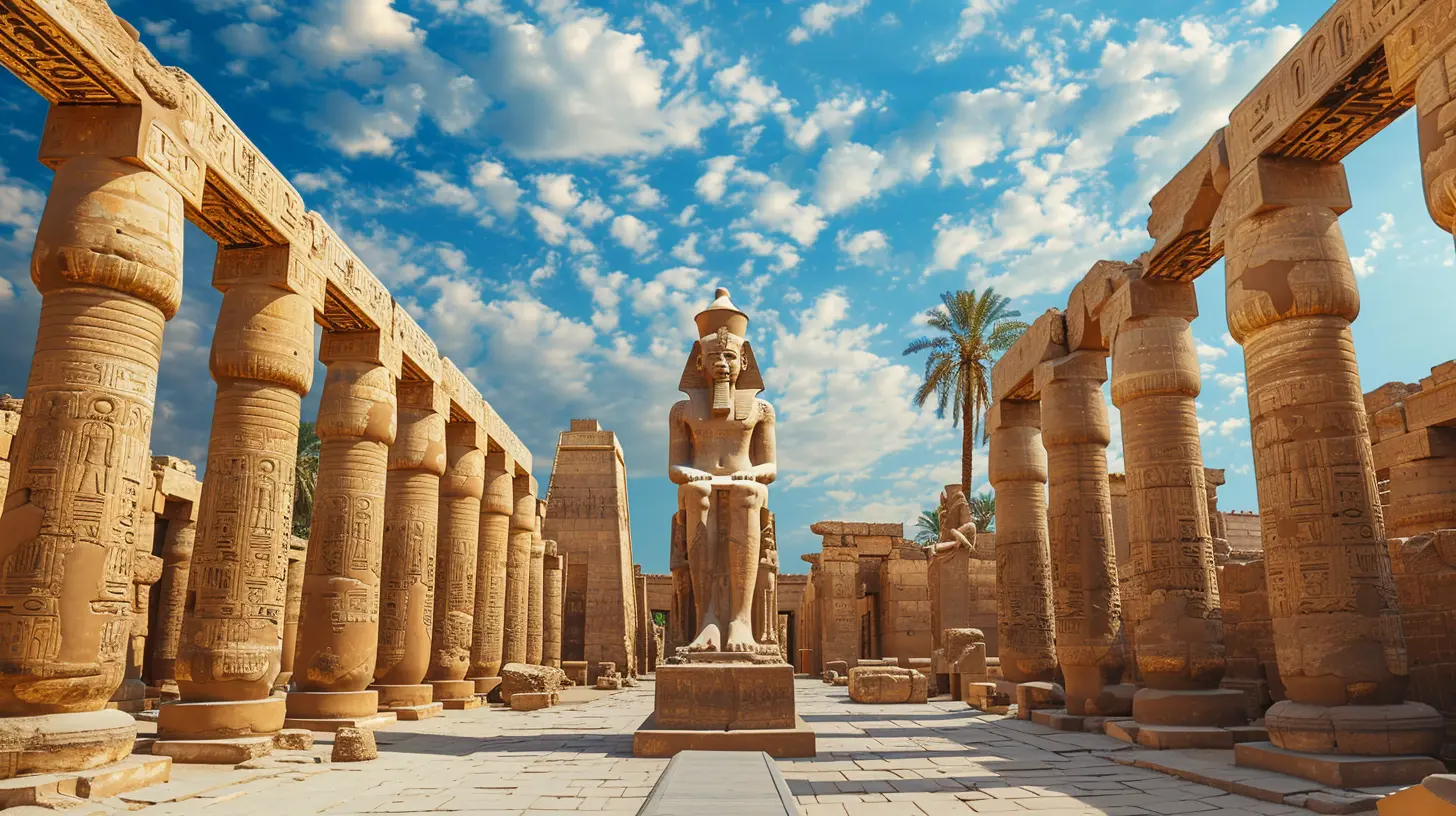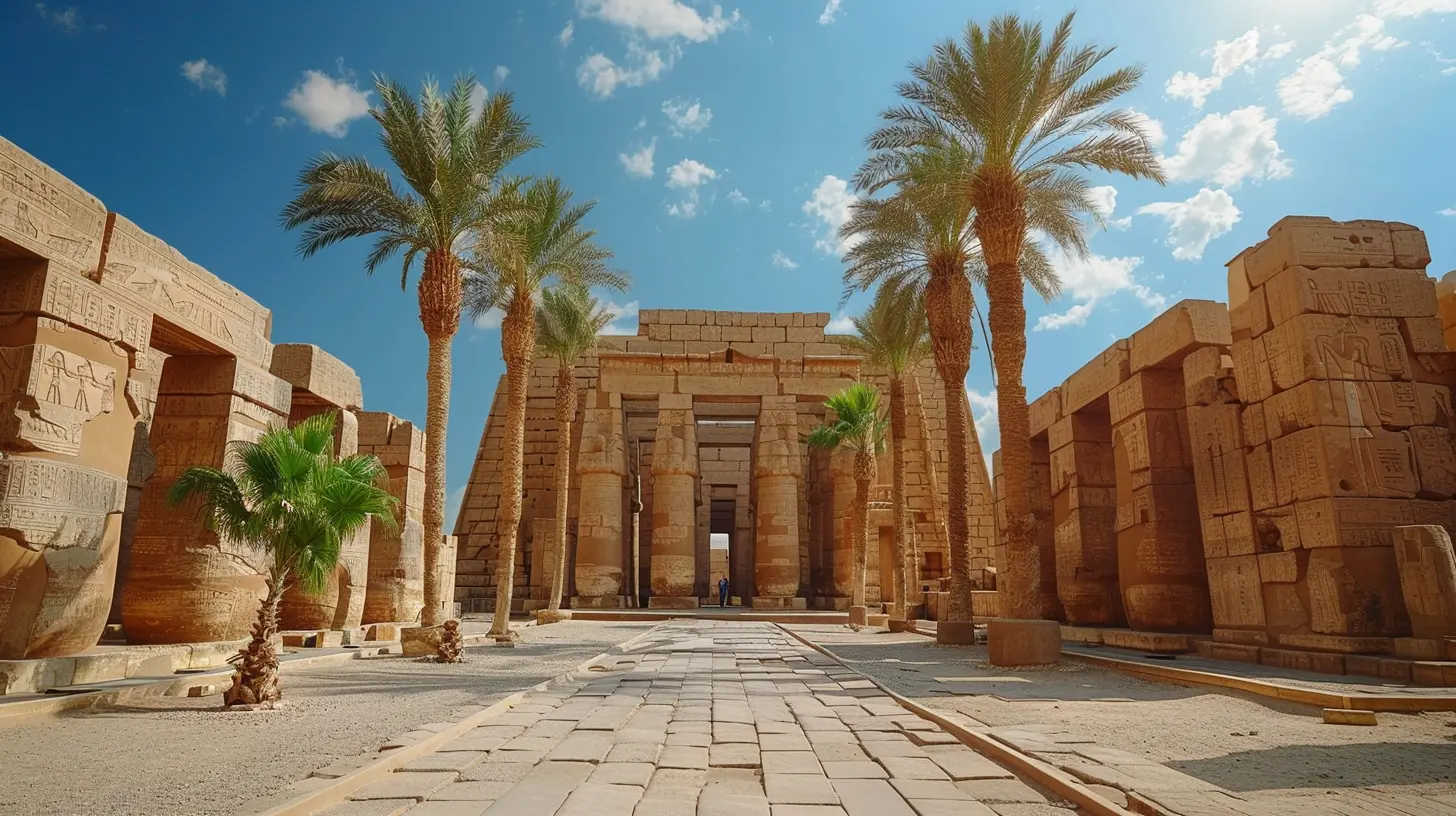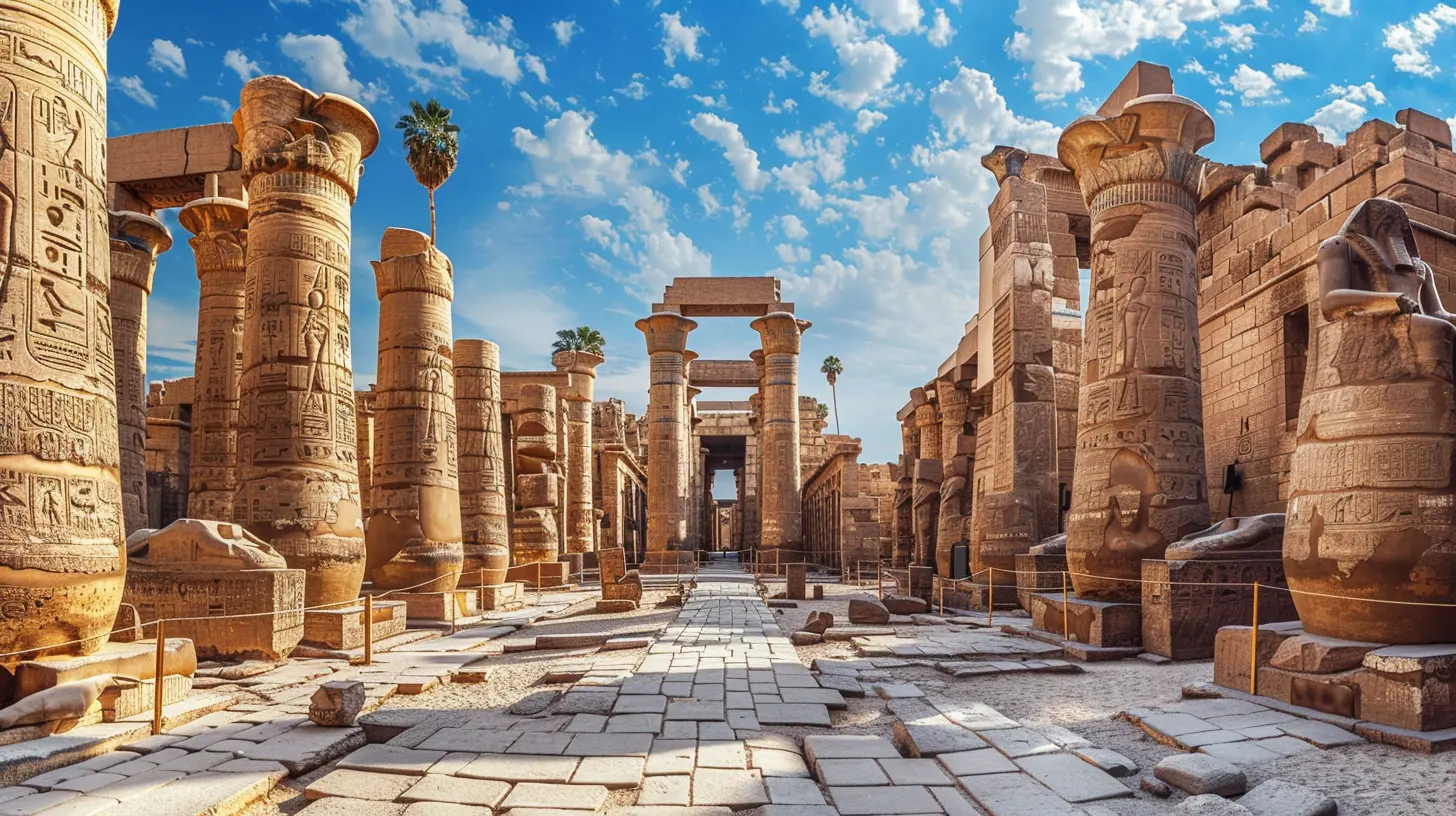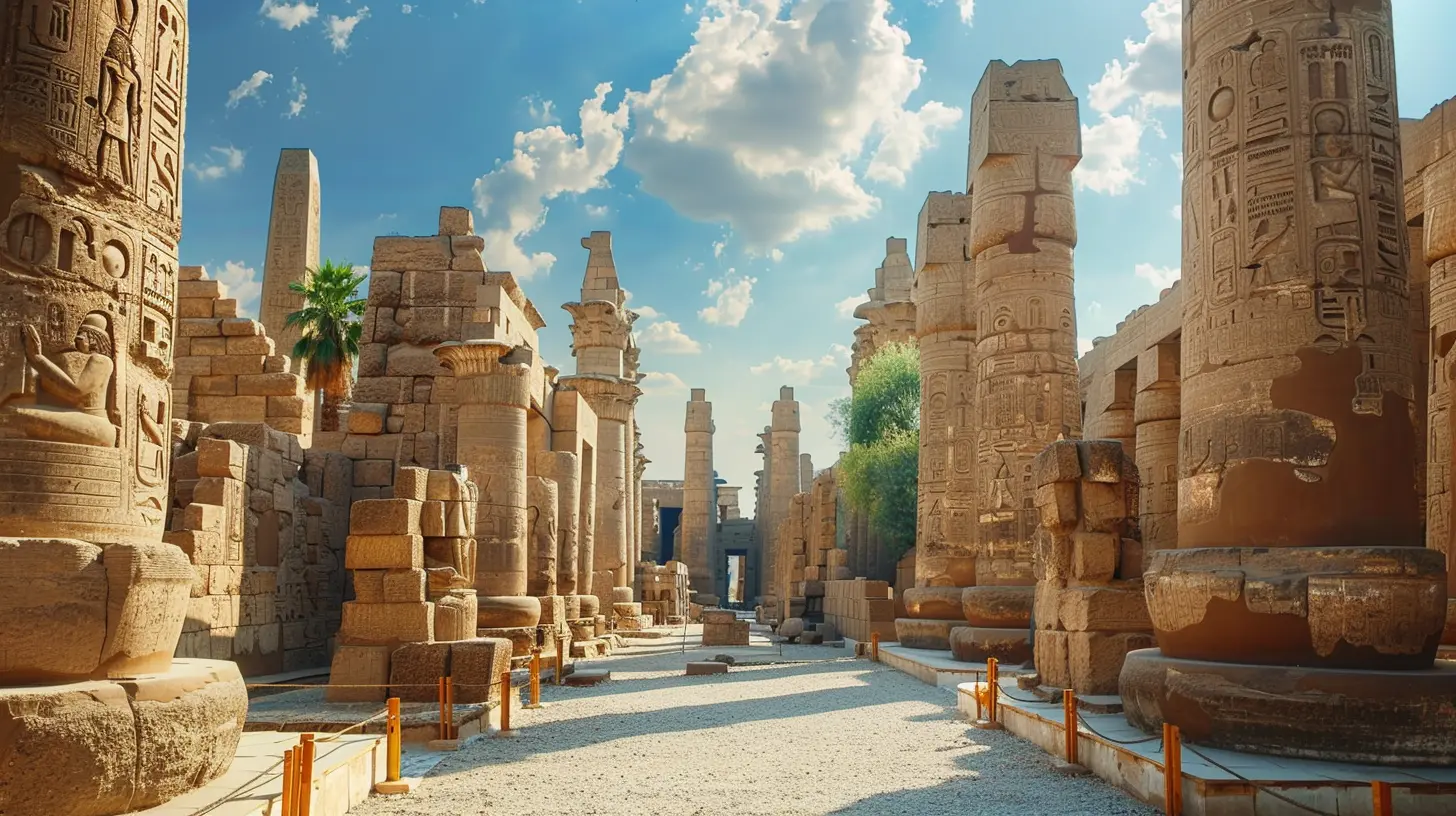The Colossal Ruins of Karnak: Egypt’s Monumental Complex
10 October 2025
Egypt has no shortage of jaw-dropping ancient wonders, but few places rival the sheer scale and grandeur of the Karnak Temple Complex. This sprawling ruin, located in modern-day Luxor, isn’t just a single temple—it’s a labyrinth of towering columns, colossal statues, and intricately carved walls that whisper tales of ancient Pharaohs and their devotion to the gods. Whether you're a history buff, an architecture enthusiast, or simply someone who loves awe-inspiring places, Karnak is a must-visit. 
A Glimpse Into Karnak’s Magnificence
Karnak isn’t just any old temple—it’s one of the largest religious complexes ever built. Imagine a space covering over 200 acres, filled with sanctuaries, pylons, and obelisks that once stood in honor of Amun-Ra, the supreme god of ancient Egypt. For nearly 2,000 years, successive Pharaohs, from the Middle Kingdom to the Ptolemaic period, contributed to its expansion, making Karnak a living record of Egypt’s changing rulers and artistic evolution.Walking through Karnak feels like stepping into an ancient city of the gods. Every stone seems to have a story, every shadow hides a secret. This is a place that can make even the most skeptical traveler feel the weight of history. 
The Hypostyle Hall: A Forest of Stone
One of Karnak’s most mesmerizing features is the Great Hypostyle Hall. Picture this: 134 massive sandstone columns arranged in 16 rows, with the tallest ones reaching up to 23 meters (75 feet). These columns aren’t just big—they’re bigger than you ever imagined, creating an overwhelming sense of scale.Each column is intricately carved with hieroglyphics, depicting scenes of gods, kings, and ancient rituals. It’s easy to imagine Pharaohs walking beneath these towering pillars, basking in the divine presence of Amun-Ra. If Karnak were a cathedral, the Hypostyle Hall would be its grandest nave. 
The Avenue of Sphinxes: A Majestic Pathway
Connecting Karnak to the nearby Luxor Temple is the Avenue of Sphinxes, a 2.7-kilometer-long road lined with hundreds of ram-headed sphinx statues. This was no ordinary walkway—it was a sacred route used for grand processions during festival times, particularly the Opet Festival, where statues of the gods would be carried between temples in a ceremonial spectacle.Although many of the original sphinxes have been lost to time, restoration efforts have revived sections of this grand boulevard, allowing visitors to walk in the footsteps of ancient priests and Pharaohs. 
The Obelisks of Karnak: Towers of Legacy
Karnak is home to some of Egypt’s most famous obelisks, including those commissioned by Queen Hatshepsut, one of ancient Egypt’s most powerful female rulers. One of her towering obelisks still stands, soaring 29 meters (97 feet) into the sky and weighing a staggering 343 tons.It’s hard to fathom how such enormous structures were carved, transported, and erected without modern machinery. These obelisks were not just monuments—they were statements of power, eternal markers of a Pharaoh’s devotion to the gods.
The Sacred Lake: A Ritualistic Sanctuary
Within the temple complex lies the Sacred Lake, a vast ceremonial pond used by priests for purification rituals. Measuring 120 meters by 77 meters, it was essential for daily temple functions. Some believe it was also used for training sacred geese, which were associated with the god Amun.Even today, standing by the lake offers a surreal experience. The still waters reflect the surrounding ruins, adding to Karnak’s almost mystical allure. Some say if you’re quiet enough, you can still hear whispers of ancient prayers carried by the wind.
Karnak’s Sound and Light Show: A Nighttime Spectacle
While visiting during the day allows you to appreciate the grandeur of Karnak’s ruins, experiencing it at night is an entirely different adventure. The Karnak Sound and Light Show transforms the temple into a living, breathing piece of history.Through dramatic lighting and narration, the temple’s walls come alive with tales of Pharaohs, gods, and epic ceremonies. It’s an atmospheric journey that makes you feel as if you've traveled back in time, standing amidst the power and mystery of ancient Egypt.
Why Karnak Still Stands Today
Many ancient structures have crumbled into oblivion, yet Karnak remains remarkably intact. How? The answer lies in its sheer scale and the dedication of modern preservationists. Although time, nature, and human intervention have taken their toll, efforts to restore and protect Karnak ensure that future generations can continue to marvel at its wonders.Walking through Karnak today is proof that some legacies are simply too colossal to fade.
Tips for Visiting Karnak
If you’re planning to visit this breathtaking complex, here are a few tips to make the most of your trip:- Go early or late – Mornings and late afternoons offer cooler temperatures and fewer crowds.
- Wear comfortable shoes – The temple complex is massive, and you’ll be doing a lot of walking.
- Hire a guide – A knowledgeable guide can bring the hieroglyphics to life with fascinating stories.
- Stay hydrated – The Egyptian heat can be unforgiving, so carry a bottle of water.
- Visit the Luxor Museum – If Karnak leaves you thirsty for more history, this museum houses incredible artifacts from the site.
Final Thoughts
The Karnak Temple Complex is not just a collection of ruins—it’s a testament to human ingenuity, devotion, and timeless ambition. Walking through its colossal halls and past its weathered statues, you can almost hear the echoes of ancient Egypt’s glorious past. If there’s one place that truly captures the grandeur of this lost civilization, Karnak is it.all images in this post were generated using AI tools
Category:
Ancient RuinsAuthor:

Pierre McKinney
Discussion
rate this article
1 comments
Kova Ramos
In Karnak's shadowed halls where history breathes, Timeless echoes whisper secrets of ancient deeds. Granite giants stand, a testament to time, Inviting wanderers to trace each stone's rhyme, A journey through ages, where memories entwine.
October 16, 2025 at 4:32 PM

Pierre McKinney
Thank you for your poetic reflection on Karnak! Your words beautifully capture the essence of this monumental complex and its rich history.


